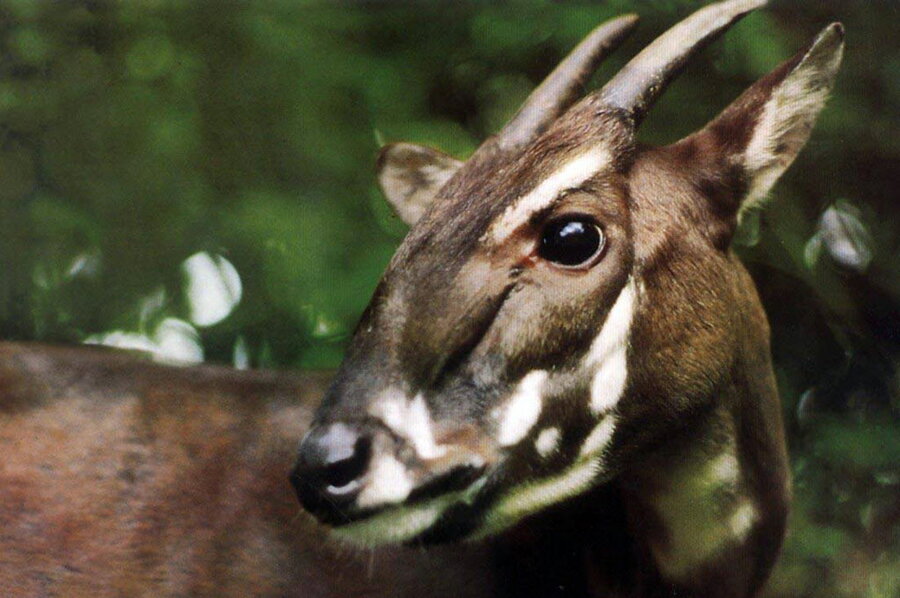'Asian Unicorn' spotted in remote Vietnam
Loading...
In a jubilant moment for conservationists, the so-called “Asian Unicorn” was seen on a camera in one of Vietnam’s remote provinces, the WWF said on Wednesday. The sighting of the saola, a doppelgänger for an antelope, suggests that efforts to rescue Vietnam’s endangered animals are making progress, the agency said.
The saola (pronounced sow-la) is a slim bovine that lives just in the Annamite Mountains ribbing Vietnam and Laos. It has two sharp, parallel horns that can grow up to 20 inches in length; in Vietnamese, saola means “spindle horns.” Humans so seldom see these horned animals that saola are often called “Asian unicorns.”
The saola was not found until 1992, when a joint team from Vietnam’s Ministry of Agriculture and Rural Development and WWF surveyed Vu Quang, the forested, species-rich region near the Vietnam-Laos border. Even then, the team found not the animal itself, but just a skull, displayed in a hunter’s home. It was less of a unicorn, and more a ghost of a unicorn. It was the first large mammal new to science in over 50 years, the WWF said.
The saola was seen in September on a camera set up in the Central Annamite mountains in Vietnam, the WWF said. The rare species was last seen on camera in 1998, in Bolikhamxay province, Laos. Villagers in the same province captured one in 2010, but it died before researchers could reach it. It has not been seen in Vietnam since 1999, the WWF said.
Since sightings are so infrequent, there is little data on saola population numbers. The WWF has estimated the number to be in the hundreds.
“When our team first looked at the photos we couldn’t believe our eyes,” said Van Ngoc Thinh, WWF-Vietnam’s Country Director, in a WWF statement. “Saola are the holy grail for South-east Asian conservationists so there was a lot of excitement.”
“This is a breath-taking discovery and renews hope for the recovery of the species,” he said.
Vietnam, swaddled in jungles and for years racked by war, now teems with discoveries of species new to science. In just the Vu Quang region alone, researchers have identified three new species of deer, a new kind of pheasant, an unusual cow alleged to eat snakes, and multiple new varieties of fish.
But as much as these recent years have been defined by discoveries in Vietnam, these have also been years of extinctions. Vietnam’s last known Javan rhino, one of five rhino species, was found slaughtered in the forest in 2010, the victim of horn-hunting poachers. And a 2012 list from the International Union for Conservation of Nature (IUCN) and the Zoological Society of London (ZSL) said that five out of 100 of the world’s most endangered species lived in Vietnam, Thanh Nien Daily reported. Those included the saola, as well as a giant soft-shell turtle, a langur, a pheasant, and a pangasius fish.
Still, the WWF said the saola sighting indicates that Vietnam’s efforts to save its rare species are working. Since 2011, forest guard patrols have stripped 30,000 snares from the area where the saola was seen and have dismantled 600 illegal hunting camps, the WWF said.








